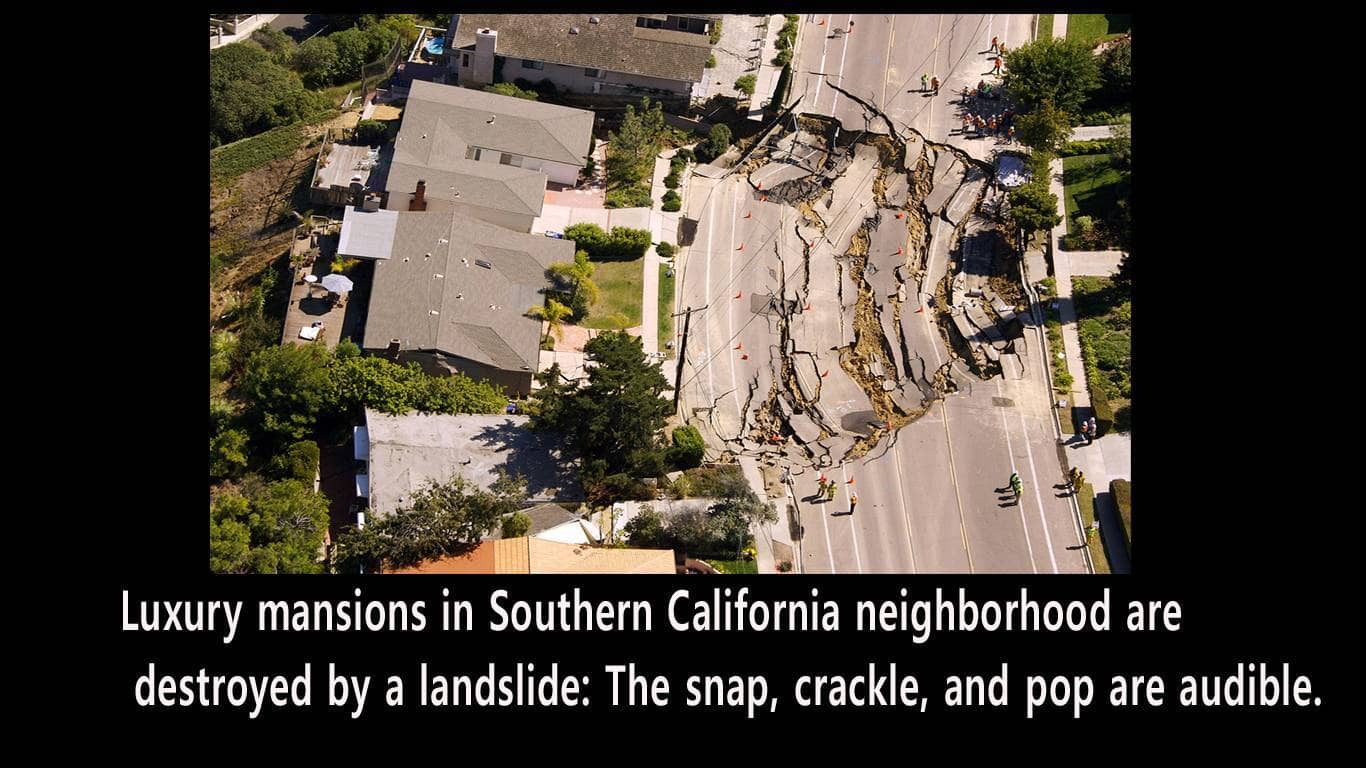A landslide over the weekend ripped luxury homes off their foundations in Southern California, prompting a dozen properties that were at risk of falling down a nearby canyon to be evacuated.
The landslide began Saturday in Rolling Hills Estates, California, an affluent and mostly residential city about 27 miles south of Los Angeles. Residents then noticed cracks appearing in structures and the ground.
Officials from the Los Angeles County Fire Department red-tagged twelve residences as unsafe, forcing 16 residents to leave with only 20 minutes to do so. On Monday, only the 12 residences were evacuated; however, Assistant City Manager Alexa Davis said that 10 were still in motion and that 16 more were being watched.
Through the weekend and into Monday , the speed of the land movement increased. The soil had moved 20 feet since the day before, according to Janice Hahn, head of the Los Angeles County Board of Supervisors, who was speaking on Monday afternoon. Additionally, residences had entirely collapsed into the canyon.
It is progressing swiftly, according to Hahn. When you’re there, you can really hear the snap, crackle, and pop of each home shifting and moving every minute.
The municipal council has stated that it will issue a state of emergency, and Rolling Hills Estates has activated its emergency operations center . The city stated that in addition to monitoring the region and offering refuge to displaced residents, it is collaborating with agencies from Los Angeles County and the Red Cross.
Suspected heavy rainfall in the landslide
Numerous houses had considerable damage on Monday, including roofs that had collapsed, walls that had been broken, chimneys that had been toppled, and decks that were dangling over the nearby canyon. A video of the residences that had been damaged and the unstable ground was posted on Twitter by the Los Angeles County Fire Department.
Although the origin of the landslide is unknown, according to Hahn, a crack running between the residences aroused concerns that the heavy rains from winter storms earlier this year might be to blame.
We won’t understand until a geologist and a soil expert conduct an in-depth post-operation on this and explain what transpired, according to Hahn. “But because of that fissure, the initial hypothesis is that it was created by the exceptionally severe rains we experienced last year and all of the under ground water that resulted from that. However, we are unsure.
Residents who had been relocated met with officials on Monday to get updates and help, according to Hahn. Residents were informed by Tony Marrone, the fire chief for Los Angeles County, that it was unsafe to enter their homes.
Many others, including one who moved in two months ago after escrow closed, were unsure if they had insurance for the incident, according to Hahn. Jeff Prang, the assessor for Los Angeles County, encouraged locals to seek for property tax exemptions and stated that his office was trying to review the value of the affected properties.
Landslides are possible in California
The U.S. Geological Survey states that California is widely recognized for being prone to landslides. In the past, destructive landslides have happened all across the state, especially on the Palos Verdes Peninsula, which is located on the south coast of the county and rises steeply above the Pacific Ocean.
The ground is still shifting at the Portuguese Bend neighborhood of Rancho Palos Verdes, where 140 homes were damaged or destroyed in 1956. The road being built through the area, which lies on top of an old landslide, happened at the same time as the landslide.
And in 2011, some months after engineers first noticed fractures and gated off the area for examination, a landslide destroyed the blufftop coastal road close to White Point in the San Pedro neighborhood of Los Angeles.
According to a summary by the USGS and the California Geological Survey, the various landforms of Southern California contribute to landslides. According to the USGS, while precipitation is the primary cause of landslides in California, there are a number of other possible causes, such as earthquakes, steep slopes, and sedimentary material that is not rock hard.
However, human activities such as construction without sufficient slope grading, changing drainage patterns, and disturbing old landslides can also cause landslides.
